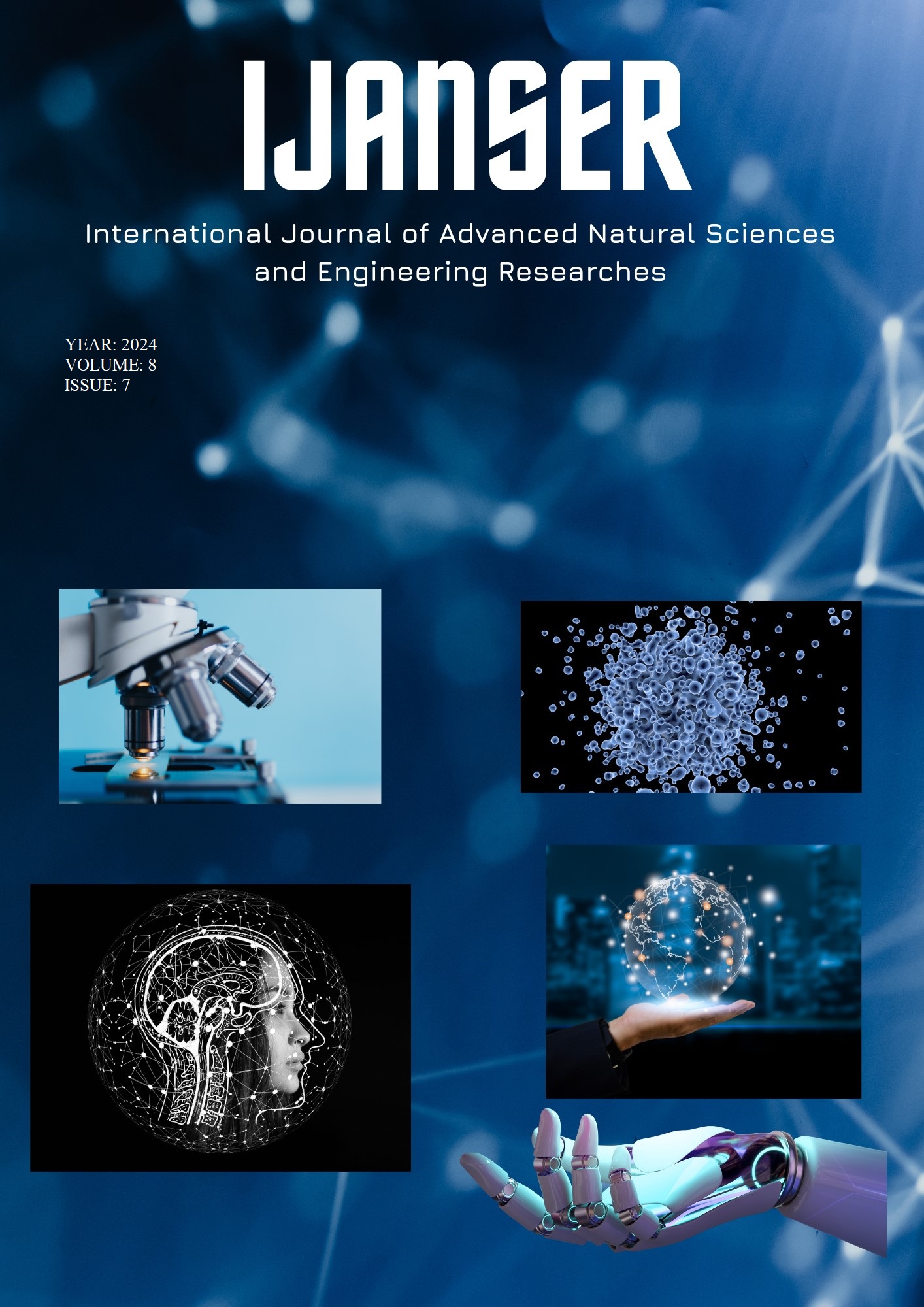An Examination of the Significance of Chloroplast Genome Analysis in the Study of Plant Evolution and Phylogenetics
Keywords:
Chloroplast Genome, Plant Evolution, Phylogenetics, Biotechnology ApplicationsAbstract
Investigating of the chloroplast genome is crucial for comprehending plant evolution and phylogenetics. Chloroplasts, organelles present in photosynthetic plants, possess their own DNA and have a vital function in energy generation. Chloroplast genomes have lower complexity and slower evolutionary rates compared to nuclear genomes, rendering them very ideal for monitoring evolutionary processes. Chloroplast genomes are commonly employed to ascertain the evolutionary connections between plant species. The aim of this study is to emphasize the importance of chloroplast genomes in plant species in relation to their phylogenetic relationships and evolutionary dynamics. Furthermore, its objective is to investigate the genetic modifications of these genomes in response to different ecological conditions. Analyzing the structural aspects of the genome, gene sequences, and mutations can provide a clearer understanding of the phylogenetic relationships across species. Specifically, we utilize chloroplast DNA to analyze the intimate evolutionary connections among species. Chloroplast genomes yield vital insights on the geographic range, adaptive strategies, and evolutionary past of plants. This knowledge is crucial for the preservation of plant diversity, the utilization of genetic resources in agriculture, and the application of biotechnology. Chloroplast genome studies are essential for comprehending the evolutionary history of plants and establishing their phylogenetic links. Chloroplast genomes offer valuable insights that can enhance the sustainable management of plant diversity and the agricultural utilization of genetic resources. Chloroplast genome research play a key role in enhancing our understanding of plant evolution and serve as the foundation for conserving plant diversity and applying biotechnology.
Downloads
References
L. Gao, Y.-J. Su, and T. Wang, Plastid genome sequencing, comparative genomics, and phylogenomics: Current status and prospects. Journal of Systematics and Evolution, 48: 77-93, 2010, https://doi.org/10.1111/j.1759-6831.2010.00071.x
K. Heyduk, J.J. Moreno-Villena, I.S. Gilman, P.A. Christin, E.J. Edwards, The genetics of convergent evolution: insights from plant photosynthesis. Nat Rev Genet 20, 485–493, 2019. https://doi.org/10.1038/s41576-019-0107-5
K. Krause, From chloroplasts to “cryptic” plastids: evolution of plastid genomes in parasitic plants. Curr Genet 54, 111–121, 2008. https://doi.org/10.1007/s00294-008-0208-8
J. D. Palmer, R. K. Jansen, H. J. Michaels, M. W. Chase, J. R. Manhart, Annals of the Missouri Botanical Garden, Vol. 75, No. 4, 1988, pp. 1180-1206 (27 pages) https://doi.org/10.2307/2399279
S. Joo, Y. Kobayashi, J-H. Lee, Y. Nishimura, Chapter 7 - Organelle heredity,Editor(s): Ursula Goodenough, The Chlamydomonas Sourcebook (Third Edition),Academic Press, 2023,Pages 139-171,ISBN 9780128224571. https://doi.org/10.1016/B978-0-12-822457-1.00016-9.
J. C. Havird, D. B. Sloan, The Roles of Mutation, Selection, and Expression in Determining Relative Rates of Evolution in Mitochondrial versus Nuclear Genomes, Molecular Biology and Evolution, Volume 33, Issue 12, December 2016, Pages 3042–3053. https://doi.org/10.1093/molbev/msw185
Z. Feng, Y. Zheng, Y. Jiang, J. Pei, L.Huang, Phylogenetic relationships, selective pressure and molecular markers development of six species in subfamily Polygonoideae based on complete chloroplast genomes. Sci Rep 14, 9783 2024. https://doi.org/10.1038/s41598-024-58934-7
L. Luo, Q. Qu, H. Lin, J. Chen, Z. Lin. E, Lin- D. Shao, Exploring the Evolutionary History and Phylogenetic Relationships of Giant Reed (Arundo donax) through Comprehensive Analysis of Its Chloroplast Genome. International Journal of Molecular Sciences. 2024; 25(14):7936. https://doi.org/10.3390/ijms25147936
L. Li, W. Wang, G. Zhang, K, Wu, L. Frang, M. Li, Z. Liu, S. Zeng, Comparative analyses and phylogenetic relationships of thirteen Pholidota species (Orchidaceae) inferred from complete chloroplast genomes. BMC Plant Biol 23, 269, 2023. https://doi.org/10.1186/s12870-023-04233-8
T. Yang, Z. Wu, J. Tie, R. Qin, J.Wang, H. Liu, A Comprehensive Analysis of Chloroplast Genome Provides New Insights into the Evolution of the Genus Chrysosplenium. International Journal of Molecular Sciences. 2023; 24(19):14735. https://doi.org/10.3390/ijms241914735
T. Zhang, M. Li, X, Zhu, S. Li, M. Guo, C. Guo, Y. Shu, Comparative Chloroplast Genomes Analysis Provided Adaptive Evolution Insights in Medicago ruthenica. International Journal of Molecular Sciences. 2024; 25(16):8689. https://doi.org/10.3390/ijms25168689
M. Yan, S. Dong, Q. Gong, Q. Xu, Y. Ge, Comparative chloroplast genome analysis of four Polygonatum species insights into DNA barcoding, evolution, and phylogeny. Sci Rep 13, 16495, 2023. https://doi.org/10.1038/s41598-023-43638-1
L. Yang, S. Deng, Y. Zhu, Q. Da, Comparative chloroplast genomics of 34 species in subtribe Swertiinae (Gentianaceae) with implications for its phylogeny. BMC Plant Biol 23, 164, 2023,. https://doi.org/10.1186/s12870-023-04183-1
J. Dobrogojski, M. Adamiec, & R Luciński, The chloroplast genome: a review. Acta Physiol Plant 42, 98, 2020. https://doi.org/10.1007/s11738-020-03089-x
L. Li, Y. Hu, M. He, et al. Comparative chloroplast genomes: insights into the evolution of the chloroplast genome of Camellia sinensis and the phylogeny of Camellia. BMC Genomics 22, 138, 2021. https://doi.org/10.1186/s12864-021-07427-2
Y. Zhang, L. Tian, L. Congming, Chloroplast gene expression: Recent advances and perspectives, Plant Communications, Volume 4, Issue 5, 100611, ISSN 2590-3462, 2023. https://doi.org/10.1016/j.xplc.2023.100611.
M. A. Furan, Elevating Thyme Species Identification: Exploiting Key Chloroplast Genes (Matk, Rbcl, and Psba-Trnh) Through Dna Barcoding And Phylogenetic Analysis Black Sea, Journal Of Engineering And Science, 2023. doi: 10.34248/bsengineering.1352976
D.Trofimov, D. Cadar, J. Schmidt-Chanasit, P. L. Rodrigues de Moraes, J.G. Rohver, A comparative analysis of complete chloroplast genomes of seven Ocotea species (Lauraceae) confirms low sequence divergence within the Ocotea complex. Sci Rep. 12, 1120. 2022. https://doi.org/10.1038/s41598-021-04635-4
J. Wang, D. Feng, J. Qian, B. Duan, & M. Fan, Characterization of the complete chloroplast genome of Salvia tiliifolia Vahl (Lamiaceae). Mitochondrial DNA Part B, 5(3), 2174-2175, 2020. DOI: 10.1080/23802359.2020.1768943
R. Balaji, K. Ravichandiran, Tanuja, & M. Parani, The complete chloroplast genome of Ocimum gratissimum from India–a medicinal plant in the Lamiaceae. Mitochondrial DNA Part B, 6(3), 948-950, 2021. DOI: 10.1080/23802359.2021.1889413
Y. Zhou, H. Zhang, H. Ping, Y. Ding, S. Hu, G. Bi, C. Li, H. Li, Y. Huang, L. Guo, X. Ma & Z. Xia, Characterization of the complete chloroplast genome of Salvia leucantha (Lamiaceae), Mitochondrial DNA Part B, 6:12, 3406-3408, 2021. DOI: 10.1080/23802359.2021.2000899
J. Hao, Y. Lu, M. Dang, R. Xia, L. Xu, Z. Zhu & Y. Yu, The complete chloroplast genome sequence of Plectranthus hadiensis (Lamiaceae) and phylogenetic analysis, Mitochondrial DNA Part B, 8:10, 1049-1053, 2023. DOI: 10.1080/23802359.2023.2262689
Y. Niu, Q. Qin, Y. Dong, X. Wang, S. Zhang, Z. Mu. Chloroplast Genome Structure and Phylogenetic Analysis of 13 Lamiaceae Plants in Tibet. Front. Biosci. (Landmark Ed) 2023, 28(6), 110. https://doi.org/10.31083/j.fbl2806110





